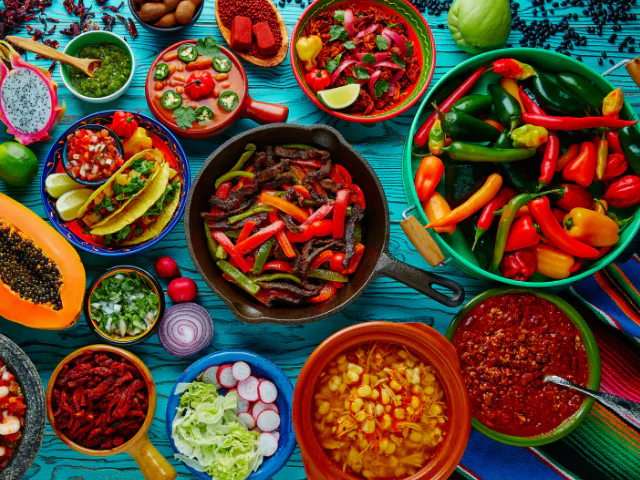Navigating through various diets, the sattvic diet often surfaces with an aura of purity and tranquility. However, misconceptions cloud its true essence. This article aims to debunk common sattvic diet myths, offering clarity on its principles and practicality.
1. Sattvic Diet is Expensive

Myth:
Many people believe that maintaining a sattvic diet is a costly affair. The emphasis on fresh, organic, and high-quality ingredients, which are often perceived as premium or luxury items, contributes to this misconception.
Reality:
While it’s true that some sattvic ingredients can be pricier due to their organic or natural qualities, a sattvic diet, on the whole, doesn’t have to be expensive. Here’s why:
- Seasonal and Local Produce: A sattvic diet encourages the consumption of seasonal and locally available produce. Such items are not only fresher but also tend to be more affordable compared to imported or off-season produce.
- Home-Cooked Meals: The sattvic diet promotes home-cooked meals, which are generally more cost-effective compared to dining out or purchasing processed and packaged foods.
- Simplicity: Sattvic meals are often simple and don’t necessarily require a long list of ingredients. Simple meals can be both satisfying and economical.
- Mindful Consumption: Being mindful and intentional about what you consume can also contribute to cost-effectiveness. Planning meals, avoiding waste, and making thoughtful grocery purchases aligned with your actual needs are all aspects of mindful consumption that can help in managing expenses.
2. Limited Food Options
Myth:
A common misconception about the sattvic diet is that it is highly restrictive, offering limited food choices. This belief stems from the diet’s exclusion of certain foods such as meat, fish, eggs, and overly processed items, which are prevalent in many people’s diets.
Reality:
Contrary to this belief, the sattvic diet is quite diverse and abundant in the variety of foods it includes. Here’s a closer look at the variety within the sattvic diet:
- Fruits and Vegetables: A wide array of fruits and vegetables are central to the sattvic diet, providing numerous options for creating diverse and colorful meals.
- Grains and Legumes: Various grains and legumes, from rice and wheat to lentils and chickpeas, are included, allowing for a multitude of meal combinations and preparations.
- Dairy and Dairy Alternatives: While pure dairy is considered sattvic, there are also options for those who prefer plant-based diets, such as almond milk or coconut yogurt.
- Nuts and Seeds: These are included for added nutrition and variety, contributing to the diet’s diversity.
- Herbs and Spices: A range of mild herbs and spices are used in sattvic cooking, adding flavor and medicinal qualities to the meals.
You Might Also Like:
3. Not Suitable for Athletes or Active Individuals

Myth:
There’s a notion that the sattvic diet may not be suitable for athletes or individuals with a highly active lifestyle. The argument often revolves around concerns regarding protein intake and the energy demands of such lifestyles.
Reality:
The sattvic diet can be adapted to meet the needs of active individuals and athletes by ensuring that the diet is well-planned and includes a variety of protein and energy sources.
- Plant-Based Proteins: The sattvic diet includes various plant-based proteins like legumes, lentils, and nuts. Incorporating a variety of these proteins can help meet the protein requirements of an active lifestyle.
- Whole Grains: Whole grains like quinoa, brown rice, and oats are excellent sources of complex carbohydrates that provide sustained energy, making them suitable for active individuals.
- Nuts and Seeds: These are not only good sources of protein but also contain healthy fats and other nutrients that are essential for overall health and recovery.
- Dairy or Dairy Alternatives: Dairy products like milk and yogurt, or alternatives like almond milk, can be included for added protein and calcium.
- Adaptability: The sattvic diet is adaptable. Depending on individual needs and nutritional requirements, one can make suitable choices within the sattvic guidelines to meet their energy and protein needs.
You Might Also Like:
4. Sattvic Diet is Only for Spiritual Seekers
Sattvic Diet Myth:
A prevalent misconception is that the sattvic diet is exclusively meant for yogis, monks, or those deeply involved in spiritual practices. People often associate it strictly with a lifestyle dedicated to spiritual growth and meditation.
Reality:
While the sattvic diet is popular among spiritual communities due to its ability to promote clarity and tranquility, it is not limited to spiritual seekers. The principles of a sattvic diet, such as purity, cleanliness, and balance, are universal and beneficial for everyone, regardless of their spiritual pursuits.
- Holistic Well-being: The diet promotes overall well-being, supporting physical health, mental clarity, and emotional balance, making it suitable for anyone looking to enhance their quality of life.
- Accessibility: The ingredients and foods promoted in a sattvic diet are accessible to most people, and the principles are easy to incorporate into various lifestyles and dietary preferences.
5. Difficult to Maintain Long-Term
Sattvic Diet Myth:
There’s a belief that due to its principles and guidelines, a sattvic diet might be challenging to maintain as a consistent lifestyle choice. People might find it hard to adhere to its guidelines over the long term.
Reality:
The sattvic diet is inherently flexible and adaptable. It encourages mindfulness and awareness, allowing individuals to make choices that best suit their needs and circumstances.
- Personal Adaptation: One can adapt the principles of the sattvic diet according to their individual needs, preferences, and circumstances, making it more sustainable.
- Variety and Flexibility: The diet offers a variety of food options and is not rigidly restrictive, allowing for flexibility and exploration within its guidelines.
- Gradual Implementation: One doesn’t have to implement all aspects of the sattvic diet at once. Gradual implementation and adjustment can make the transition easier and more sustainable.
The Everyday Ayurveda Cookbook: A Seasonal Guide to Eating and Living Well
FAQ – Sattvic Diet Myths
What makes a diet sattvic?
A sattvic diet is primarily vegetarian, emphasizing fresh, organic, and wholesome foods that enhance clarity and equilibrium in the mind and body.
Is a sattvic diet suitable for everyone?
Yes, a sattvic diet, with its emphasis on pure and nourishing foods, can be adapted to suit various lifestyles and dietary needs, promoting overall well-being.
Can athletes and highly active individuals follow a sattvic diet?
Yes, athletes can maintain a sattvic diet by incorporating a variety of plant-based proteins, whole grains, and other nutrient-rich foods to meet their energy and protein needs.
Is the sattvic diet restrictive and hard to follow?
While the sattvic diet has guidelines, it also allows for flexibility and personal adaptation, making it possible to maintain as a long-term dietary choice.





